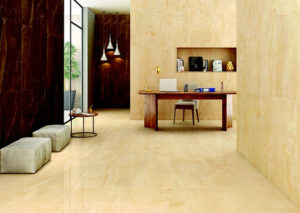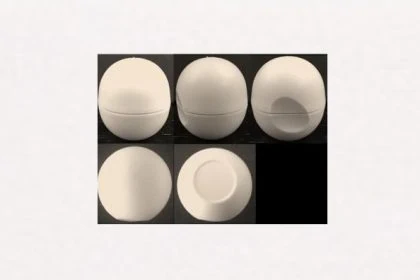The MO-DA brand for a ceramics company, which is well known in Italy, was rejected by the European Court of Justice as a union trademark. The term “fashion” contained in the literal sense of this mark does not acquire any distinctive character through the graphic design. Nor is distinctiveness through use taken into account for the whole of the EU.
 MO-DA – Italien brand as Union trademark rejected by CJEU
MO-DA – Italien brand as Union trademark rejected by CJEU
In February 2017, the plaintiff, Gruppo Armonie SpA (Italy), filed an application for the word and figurative mark MO-DA as a Union trade mark in Nice Class 19 for “building materials for pavements and coatings”. The ceramics company is well known in Italy and the MO-DA brand has also been established in Italy for years. However, the European Trademark Office (EUIPO) refused the desired trademark registration due to lack of distinctive character (according to Article 7(1)(b) and (2) of EU Regulation 2017/1001).
“Moda” = advertising message?
The word “Moda” is the italien word for “fashion” and thus means “adaptation to current taste” – and this meaning of the term was not disputed by the plaintiff either. However, Gruppo Armonie argued that that definition applied in particular to goods of clothing in Nice Class 25.
That argument was rejected by the European Court (CJEU). Given the characteristics and the market of the goods covered by the mark applied for, there are consumer trends and tastes for those goods too, and consumers will therefore perceive the term ‘moda’ as an advertising message of an advertising nature and not as a commercial origin.
Although advertising messages and slogans may, in principle, also be protected as trade marks, the Court added, only if they contain a certain originality. However, this is not the case with “Moda”, the CJEU ruled.
Among other things, four documents were submitted to the court as evidence – and for the first time, i.e. not to the Board of Appeal. Actually, such new evidence is not admissible. However, these four documents were not evidence in the strict sense, in particular within the meaning of Article 85 of the Rules of Procedure of the Court of First Instance, the CFI explained, but concerned the registration practice of the EUIPO, on which a party may rely (cf. mutatis mutandis, judgments of 24 November 2005, ARTHUR ET FELICIE, T-346/04, EU: T:2005:420, para. 20; of 24 November 2016, CG/EUIPO – Perry Ellis International Group (P PRO PLAYER), T-349/15, unpublished, EU:T:2016:677, para. 18).
Perception of distinctive character by the relevant public
According to settled case-law, the distinctive character of a sign may be assessed only in relation to the goods or services in respect of which registration is sought and, on the other hand, in relation to the perception of the relevant public. In that regard, the applicant also claimed that the EUIPO had misinterpreted the perception of the mark applied for by the relevant public. In that regard, the Italian company relied on experienced professionals or technical staff with whose assistance consumers would buy the building materials in question.
However, this is not sufficient evidence for the perception of the public, the CJEU ruled, not even in the field of ceramics, where even a degree of consumer attention in the range from normal to highly varying had been taken into account by the EUIPO.
Degree of distinctiveness of the sign
Finally, the applicant claimed that the degree of distinctiveness of that sign had been wrongly assessed by the graphic design. The division of the term ‘moda’ into two syllables, ‘mo’ and ‘da’, separated by a small square, and the use of small letters is a graphic process which also creates distinctive character.
The CJEU also rejected this argument. The figurative element shows a very common graphic process and therefore the graphic features used do not have sufficient effect to confer a minimum of distinctiveness on the term “moda”, the Court held.
Proof of distinctive character through use
Gruppo Armonie also proved that the mark applied for had acquired distinctive character through use (under Article 7(3) of EU Regulation 2017/1001). The proven volume of sales showed the presence of the Italian trade mark on the relevant market for more than seven years. However, the evidence must take into account the entire Union, which was not fulfilled by the Italian ceramics company.
Thus, although it is not necessary to prove the distinctiveness acquired through use for each individual Member State, the Supreme European Court specified in the Nestle vs. Mondelez case (EU:C:2018:596 of 25 July 2018). However, the evidence submitted must enable it to be established that the distinctive character has been acquired in all the Member States of the Union in which the mark did not possess any original distinctive character.
The action against the refusal to register the mark MO-DA was therefore dismissed in its entirety by the European Court.
Would you also like to protect your trademark or brand?
Our lawyers are experienced in trademark and patent law, national and international law.

Sources:
Judgement CJEU “MO-DA” EU:T:2019:528 (in French)
Image:
Simpolo_Ceramics /pixabay.com / CCO License







Leave a Reply